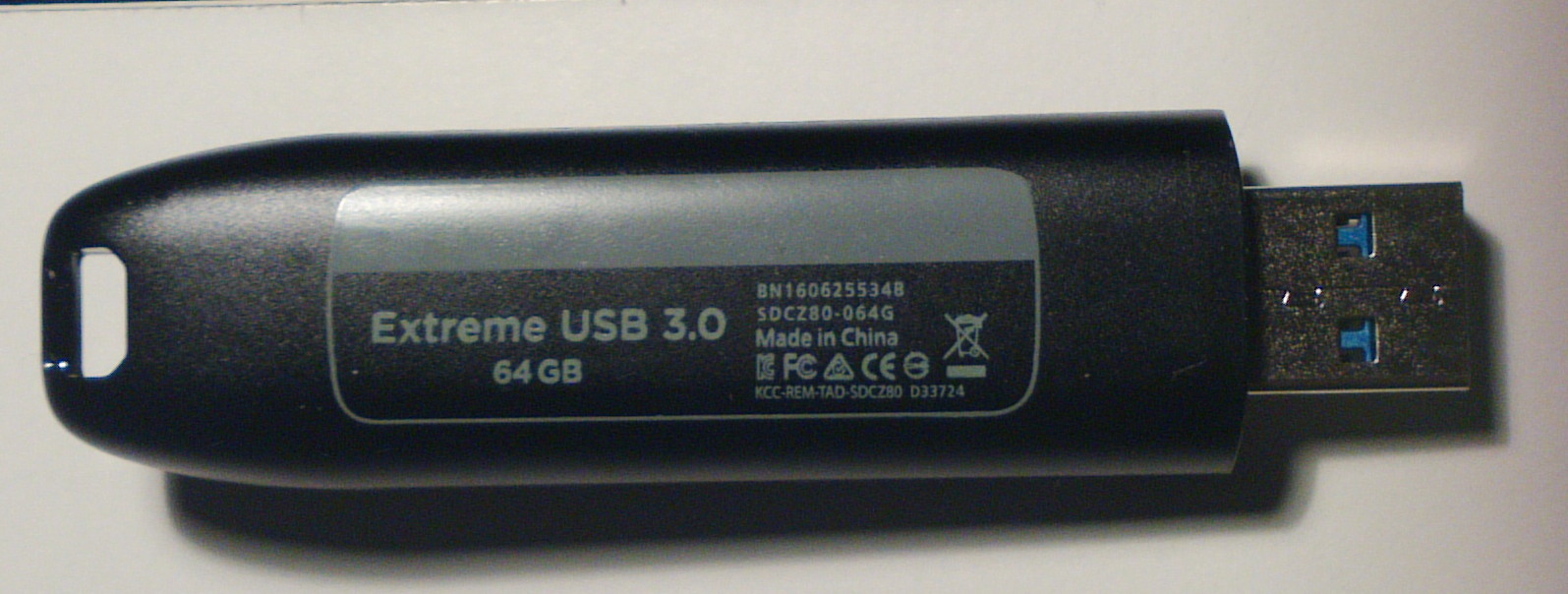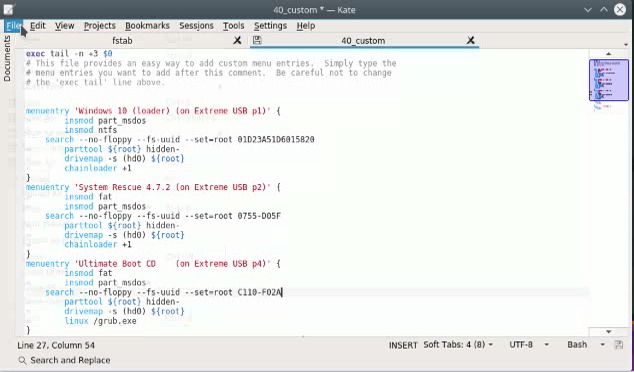| YouTube Videos |
| FILTERS: |
| ALL |
| USB Flash Drives |
| Android |
| Android-x86 |
| Backup Cloning |
| Chromecast |
| Dual Boot MultiBoot |
| Linux |
| Messaging IM SMS |
| Misc. Soc Media |
| Music Jazz MPB |
| Remote Controls |
| Screen Recording |
| Smart-TV IPTV |
| Windows |
 |
Krister's Blog krister at hallergard dot com | Last Updated: 2016-11-21 |
Part 3: Adding System Rescue & Ultimate Boot CD
This is the 3rd and last part of the series about the SanDisk Extreme flash drive. In this part the dual boot with Windows 10 and Linux Kubuntu 16.10 is turned into multi boot by adding System Rescue and the Ultimate Boot CD UBCD. I have been pleasently surprised about how fast this USB-stick is, especially compared to my attempt to make a MultiBoot USB-Stick 2 years ago.
|
Part 1: Installing Windows 10 Part 2: Adding Kubuntu 18.10 dual boot Part 3: Adding System Rescue & UBCD |
Blog Blog Here |
 Video 5 min Video 5 min Video 8½ min Video 8½ min Video 6 min Video 6 min
|
 |
|
Partitioning on a USB flash drive
Partitioning a USB flash drive is much more tricky than partitioning a hard disk drive. Windows does not recognize more than the first partition, and it is thus not possible to install boot loaders using Windows tools. I used GParted in Linux for all partitioning. |
 GParted |
||
The System Rescue ISO is on a fat32 file system, and thus can only be installed onto partition 1 (which for me was busy having installed Windows 10), and I wanted it on partition 2. Probably the best work around is to install to an ext4 partition, rather than the quite lengthy process I used: I extracted the ISO onto a small USB stick using Rufus. Booting this stick I installed System Rescue onto another small USB-stick. Then in Linux I created an image of this using Partimage. And finally also in Linux with Partimage, I restored this image onto partition 2.
|
After setting the boot flag this booted straight away, but got stuck on hardware setup using a USB 3 port. No such problems when moving to a USB 2 port.
Later I added an entry to Kubuntu's Grub2 bootmenu, so so that all the partitions could be booted from this menu. Thus no need to reset the boot flag.
Ultimate Boot CD From an old installation (as partition 1) I copied over the files to partition 4, and was the faced with the question of howto install the boot loader? UBCD is a Windows XP type system, but it is not possible to install the XP boot loader on partition 4. I settled for using grub.exe from Grub4DOS, as a menu entry to the Kubuntu Grub 2 bootmenu. |
 /etc/grub.d/40_Custom |
| Addendum 2016-12-01 |
|
Have checked, and UBCD does work on this PC, if installed to the first partition of the Extreme Flash Drive, but not if installed to other partitions. Gave priority to Windows 10
on partition 1, and instead installed Puppy Linux on partition 4.
Booting on other PC:s Checked booting on my wife's old Laptop (Compaq Presario C710, 2008, Intel Core2 Duo Celeron, RAM=2GB) - 32-bit and USB2. I was surprised that all 4 systems booted and run without problems. Kubuntu 16.10 booted and run rather slowly, but the other three were quite fast. |
